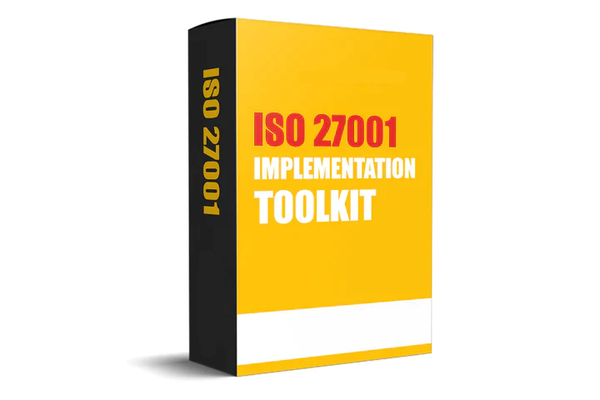What Is ISO 27001 Framework?
ISO 27001 is a set of standards that helps businesses protect sensitive data and reassures clients, partners, stakeholders, and the public about their commitment to maintain high standards in data security.This international standard is more than just a requirement for compliance. It's a strategic investment that builds trust, ensures business continuity and fosters a culture of awareness about security. ISO 27001, with its systematic approach that includes risk assessment, control implementation, and continual improvement, allows organizations to adapt, thrive, and survive in the face evolving digital threats.
Understanding ISO 27001: The Basics
ISO 27001 is an internationally recognized standard that applies to information security management (ISMS). It provides a systematized approach to managing and protecting information assets whether they are physical, electronic or other. The framework was designed to guarantee the confidentiality, integrity and availability of data while meeting legal, regulatory and contractual requirements.
ISO 27001 is a structured method that empowers organisations to identify security risks, evaluate their impact and implement mitigation controls. Businesses can establish a robust ISMS that is based on ISO 27001 to create a proactive environment which anticipates and protects against evolving cyber-threats and vulnerabilities.
This standard promotes a culture where regular assessments and audits are used to optimize information security measures. ISO 27001 is a solid foundation that organizations can use to navigate the complexity of information security as technology and the digital landscape continue to evolve. It instills confidence in stakeholders, and allows for secure and resilient operations within an interconnected environment.
ISO 27001: Key Principles
ISO 27001 stresses the importance of top management involvement in the creation, implementation and improvement of ISMS. Leadership commitment is essential to ensuring that information security is integrated into the culture of an organization.
- Risk Assessment and management: ISO 27001 stresses the importance of identifying and assessing information security risks. Organisations must perform a thorough assessment of the threats and vulnerabilities that may exist to their information assets. They should also evaluate any potential impact and implement controls to reduce these risks.
- ISO 27001 Framework: ISO 27001 follows the Plan-Do-Check-Act cycle (PDCA), encouraging organizations to continually monitor and improve their security practices. This iterative approach helps organizations adapt to changing threats and challenges.
- Leadership and Commitment: Top management plays a crucial role in setting the direction for information security. They must demonstrate a commitment to the establishment, implementation, maintenance, and continual improvement of the ISMS (Information Security Management System).
- Policy and Objectives: Establishing a clear information security policy and objectives ensures that the organization's goals for protecting sensitive data are well-defined and aligned with its overall mission.
- Risk Treatment: Once risks are assessed, organizations must decide how to treat them. This could involve mitigating, accepting, transferring, or avoiding risks, depending on their significance.
- Legal and Regulatory Compliance: ISO 27001 requires organizations to comply with relevant laws and regulations concerning information security, ensuring they are in line with legal requirements.
ISO 27001: Benefits to Implementation
- Enhanced Security: ISO 27001 can help organizations establish a robust framework for security that protects them against various threats such as cyberattacks, data breaches and unauthorized access.
- Risk Management: The framework’s approach to risk management and assessment allows organizations to identify and manage potential security risks in a proactive manner, reducing the likelihood that security incidents will occur.
- Customer Confidence: ISO 27001 certification shows an organization's commitment and ability to protect sensitive information. This increases customer confidence.
- Cost Savings: By preventing security breaches and reducing downtime and legal penalties, effective information security management can result in cost savings.
- Competitive Advantage: ISO 27001 Certification can give you a competitive edge, especially if you are bidding on contracts or partnerships requiring robust information security.
Implementing ISO 27001 - Step-by-Step Guide
- First step: To implement ISO 27001, you must first gain the commitment and support of top management. It is important to define the ISMS scope and identify key stakeholders.
- Gap Analysis: Perform a comprehensive gap assessment to compare the current practices of the organization in information security with the ISO 27001 requirements. This step helps to identify areas for improvement and informs development of an actionplan.
- Assessing risks: Identifying and assessing potential threats to an organization's assets. Assess the likelihood and impact of each risk in order to determine their priority for mitigation.
- Risk Treatment: Develop risk treatment plans that detail specific controls and measure to mitigate identified risks. These controls may include organizational, technical, and procedural steps.
- Documentation: In the context of ISO 27001, documentation refers to the creation, management and maintenance of records and policies, guidelines and other materials which define an organisation's Information Security Management System (ISMS).
- Implementation of Controls : Implement the controls described in the risk management plans. These controls can include access controls and encryption, as well as incident response procedures and employee training.
- Training and Awareness: Train all employees on the importance and role of information security. Awareness campaigns are a great way to foster a security conscious organizational culture.
- Performance Evaluation: Within the ISO 27001 framework, performance evaluation involves a systematic assessment of the organization's Information Security Management System (ISMS) in order to determine its effectiveness, efficiency, and compliance with established objectives and controls.
Conclusion
In today's data-driven and interconnected world, organizations need to prioritize information security in order to protect their valuable assets while maintaining the trust of their stakeholders. ISO 27001 is a comprehensive framework for information security management that helps organizations to identify risks, implement control measures, and continually improve their security practices. ISO 27001 provides a framework for establishing a robust management system to protect against digital threats.




